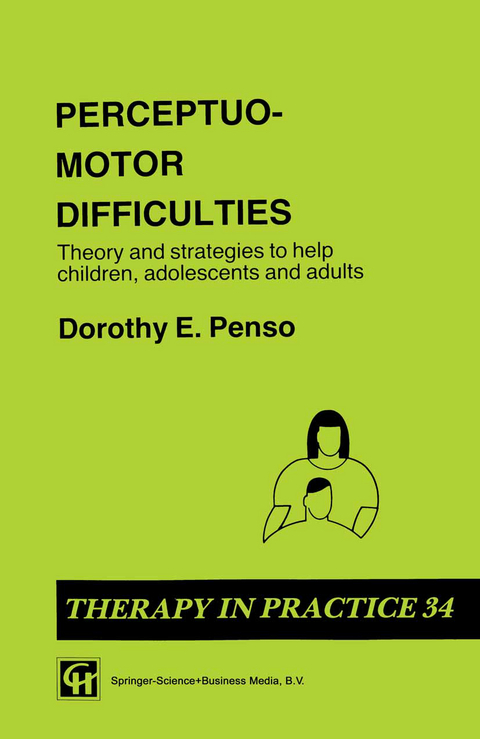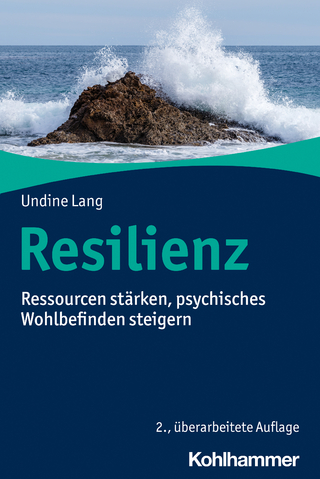
Perceptuo-motor Difficulties
Theory and strategies to help children, adolescents and adults
Seiten
1993
Chapman and Hall (Verlag)
978-0-412-39810-0 (ISBN)
Chapman and Hall (Verlag)
978-0-412-39810-0 (ISBN)
In the early years of this century a syndrome manifested by perceptuo-motor difficulties was described. Many school teachers were unaware of the existence of such problems and so were unable to make allowances for the gross and fine motor difficulties and perceptual problems encountered by some pupils during the course of the school day.
In the early years of this century a syndrome manifested by perceptuo-motor difficulties was described. During succeeding years further references were made to such a syndrome. In the first half of this century, however, children who suffered from such difficulties received little acknowledgement of their problems; few were neurologically assessed or offered remedia tion. Many school teachers were unaware of the existence of such problems and so were unable to make allowances for the gross and fine motor difficulties and perceptual problems encountered by some pupils during the course of the school day. Although many of these children were of average, and some of above average, ability, they were regarded as having little academic potential. Some were regarded as being 'educationally subnormal', a term applied at that time, because of perceptual problems which impaired reading ability and motor difficulties which affected their handwriting. It was not until the 1960s that interest in the difficulties experienced by these children began to gather momentum. Paediatricians, therapists, teachers and psychologists became involved in research, assessment and treatment. Children began to be handled more sympathetically in school. Parents learned of the existence of such difficulties and sought help for their affected children. Today medics, paramedics and educationalists are consulting each other, sharing knowledge and expertise to the advantage of children with perceptuo motor difficulties. Some problems resolve with maturity, though a proportion of these children have difficulties which persist into adolescence.
In the early years of this century a syndrome manifested by perceptuo-motor difficulties was described. During succeeding years further references were made to such a syndrome. In the first half of this century, however, children who suffered from such difficulties received little acknowledgement of their problems; few were neurologically assessed or offered remedia tion. Many school teachers were unaware of the existence of such problems and so were unable to make allowances for the gross and fine motor difficulties and perceptual problems encountered by some pupils during the course of the school day. Although many of these children were of average, and some of above average, ability, they were regarded as having little academic potential. Some were regarded as being 'educationally subnormal', a term applied at that time, because of perceptual problems which impaired reading ability and motor difficulties which affected their handwriting. It was not until the 1960s that interest in the difficulties experienced by these children began to gather momentum. Paediatricians, therapists, teachers and psychologists became involved in research, assessment and treatment. Children began to be handled more sympathetically in school. Parents learned of the existence of such difficulties and sought help for their affected children. Today medics, paramedics and educationalists are consulting each other, sharing knowledge and expertise to the advantage of children with perceptuo motor difficulties. Some problems resolve with maturity, though a proportion of these children have difficulties which persist into adolescence.
Perceptuo-motor difficulties in children - theory and remediation; understanding the effects of the perceptuo-motor difficulties of childhood; do problems disappear with maturity?; tertiary, further and adult education; personal appearance and the impression given to others; career choices and difficulties; strategies within the home and family.
| Erscheint lt. Verlag | 1.1.1993 |
|---|---|
| Reihe/Serie | Therapy in Practice Series |
| Zusatzinfo | XI, 167 p. |
| Verlagsort | London |
| Sprache | englisch |
| Maße | 140 x 216 mm |
| Themenwelt | Sachbuch/Ratgeber ► Gesundheit / Leben / Psychologie ► Lebenshilfe / Lebensführung |
| Medizin / Pharmazie ► Allgemeines / Lexika | |
| Medizin / Pharmazie ► Medizinische Fachgebiete ► Pharmakologie / Pharmakotherapie | |
| Medizin / Pharmazie ► Pharmazie | |
| ISBN-10 | 0-412-39810-9 / 0412398109 |
| ISBN-13 | 978-0-412-39810-0 / 9780412398100 |
| Zustand | Neuware |
| Haben Sie eine Frage zum Produkt? |
Mehr entdecken
aus dem Bereich
aus dem Bereich
Ressourcen stärken, psychisches Wohlbefinden steigern
Buch | Softcover (2023)
Kohlhammer (Verlag)
36,00 €
die Prämenstruelle Dysphorische Störung als schwerste Form des PMS
Buch | Softcover (2023)
Kohlhammer (Verlag)
29,00 €
wie man sich der Wahrheit stellt, sich selbst akzeptiert und ein …
Buch | Softcover (2023)
Kohlhammer (Verlag)
26,00 €


